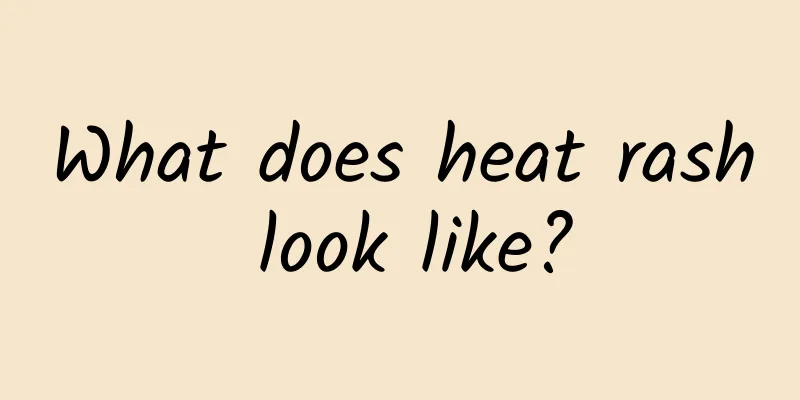What does heat rash look like?

|
Heat rash is the common name for prickly heat. Babies are very susceptible to prickly heat, which can appear in many parts of the body, especially in areas with many wrinkles. Prickly heat can be divided into different types. As a parent, you need to know the main classifications so that you can properly deal with it when your child has prickly heat. So, what does heat rash look like? Let’s take a closer look below. Prickly heat is a common superficial, inflammatory skin disease in summer or hot environments. Because in a hot and humid environment, a large amount of sweat is not easy to evaporate, causing the stratum corneum to be soaked and swollen, and the sweat gland ducts to become narrow or blocked, resulting in sweat retention and sweat infiltration into the surrounding tissues, forming papules, blisters or pustules, which are more common in the folds. Clinical manifestations According to the difference in sweat gland duct damage and sweat overflow site, it is clinically divided into the following types: 1. Crystalline Miliaria Also known as white prickly heat, it is caused by the overflow of sweat in the stratum corneum or the sweat ducts under the stratum corneum. It is common in patients with high fever, heavy sweating, long-term bed rest, and excessive weakness. The skin lesions are superficial small blisters ranging in size from the tip of a needle to the head of a needle, with thin and clear walls, no redness around them, which break easily with slight rubbing and leave tiny scales after drying. It is self-limited and generally asymptomatic. 2. Red milia Also known as prickly heat, it is caused by the overflow of sweat ducts in the spinous layer. The disease occurs acutely, with skin lesions appearing in batches as dense, round, pointed, needle-sized papules or papulovesicles, surrounded by a mild red halo. There is mild desquamation after the skin lesions subside. Conscious mild burning and itching sensation. 3. Pustular miliaria Also known as purulent rash. It often develops from red miliaria. The skin lesions are dense papules with needle-sized superficial pustules on top. Pustules often contain sterile or nonpathogenic cocci. 4. Deep Milia Also known as deep prickly heat, it is caused by the overflow of sweat ducts in the upper dermis, especially at the dermis-epidermis junction. It is common in patients with severe and recurrent episodes of red milia. The skin lesions are densely packed small skin-colored blisters with clear contents that are not easily rubbed, and they increase in size when sweating and decrease in size when not sweating. When the rash is widespread, sweating decreases or disappears on the skin of the whole body, and compensatory sweating increases on the face, armpits, hands and feet, which can cause tropical ahidrosis or heat exhaustion. Patients may experience systemic symptoms such as weakness, drowsiness, dizziness and headache. |
<<: Can prickly heat powder cure eczema?
>>: Can mugwort cure prickly heat?
Recommend
What ointment is effective for eczema
After eczema occurs, certain medicines can be use...
It is important to prevent the sequelae of fractures
Fractures are very common in our daily life and w...
Symptoms of measles
Measles is very common among children. It is an i...
What is the quick way to get rid of sweaty and smelly feet?
When the human body emits a certain amount of swe...
Tips for relieving neck pain
There are many reasons that cause neck pain. Work...
Is syringoma contagious?
Many people think that when they have some abnorm...
Will Liuwei Dihuang Pills cause internal heat?
"Shanghuo" is a term in traditional Chi...
How should gout patients recover and how should gout be treated?
Gout patients should eat more low-purine foods, l...
What are the effects of Bodhi fruit?
Bodhi fruit has a good effect in inhibiting bacte...
Baby likes to lick clothes
In our lives, there are many babies who like to l...
Advanced symptoms of colon cancer
Colon cancer is a common gastrointestinal tumor, ...
Can I drink water after swimming?
Swimming is a very popular sport. It can exercise...
Why do women urinate frequently even though they don’t drink water?
Urination is a very normal thing. However, some w...
Which is hotter, chili or chili pepper?
In life, many people like to eat chili peppers. A...
What is liver cyst?
Liver cyst is a common benign disease, which main...









